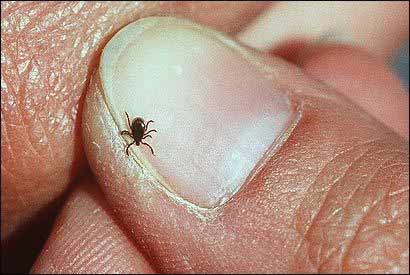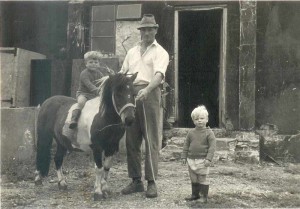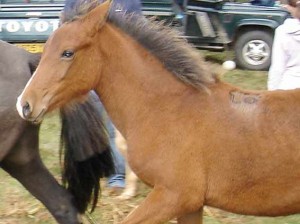Author Archives: New Forest Trust
Give now and help New Forest wildlife thrive
Vital funds are needed to help a successful New Forest conservation volunteer scheme continue – and this week any public donations will be doubled.
The New Forest Trust has teamed up with the National Park Authority (NPA) to launch an appeal to get its 600 volunteers back outside to help care for the New Forest after the pandemic and to increase their numbers by a further 400 people.
The volunteers have undertaken critical work including conserving woodlands, creating hedgerows, planting trees and carrying out surveys but the Lottery funding to pay for coordination, training and equipment has come to an end.
Now the Trust has entered into the Big Give’s Green Match Fund to raise £2,500 in one week and the money will be doubled to £5,000 by the Fund to support volunteering work.
Members of the public are asked to donate whatever they can on the New Forest Trust’s Big Give page from midday this Thursday (22 April) which is Earth Day: https://donate.thebiggive.org.uk/campaign/a056900001opaJlAAI
William Ziegler, Chairman of the New Forest Trust (registered charity number 1099420), said: ‘The New Forest is a unique environment which contains numerous rare species and the work of the volunteers is vital in trying to ensure their continued existence in the face of ever-increasing pressures.
‘We’re calling on all our residents and businesses to please each give a little this week so we can double their money and provide a much-needed boost to the volunteering programme, which is in danger of grinding to a halt.’
Richard Austin, Volunteer, Training and Mentoring Coordinator at the NPA, said as well as supporting the New Forest and its communities, volunteering provides huge health and wellbeing benefits.
He said: ‘Our volunteers tell us that volunteering is life-changing and improves not only their physical health but their wellbeing too. So we are desperately keen to get our volunteers back out in the Forest not only to help nature recover but also help people recover from the pandemic when it’s safe to do so.
‘Volunteering gives people the chance to see parts of the New Forest that they haven’t before, all while making new friends, discovering new skills, learning about this historic landscape and becoming custodians of it.
‘Please give whatever you can to help us get the programme up and running again.’
Jo Shorrocks has been volunteering on wildlife conservation projects for the NPA since 2016. Jo said: ‘There are so many benefits to volunteering. You’ve got the fresh air, you’ve got the exercise, you’ve got the company, but it is the education side that is a benefit for me in particular.
‘The people that run these tasks are experts in their field and they are very happy to pass on their knowledge. It helps you to appreciate and understand what’s around you a lot more. I do feel it’s effectively a form of mindfulness that you don’t necessarily know you’re doing, but you are.’
To qualify for match funding, donations must be given between midday on Thursday 22 April and midday on Thursday 29 April through the New Forest Trust’s Big Give fundraising page: https://donate.thebiggive.org.uk/campaign/a056900001opaJlAAI.
BBC Radio Solent Interview at Balmer Lawn Hotel
Zoonoses
 Zoonoses are diseases that can pass between animals and people. They’re relatively rare in this country. Rabies is probably the best known. Other examples include salmonella, ringworm, e-coli, Weil’s disease, orf, and Lyme’s disease.
Zoonoses are diseases that can pass between animals and people. They’re relatively rare in this country. Rabies is probably the best known. Other examples include salmonella, ringworm, e-coli, Weil’s disease, orf, and Lyme’s disease.
Lyme’s disease is the most common zoonose in the UK, according to government figures, but still rare- about a thousand cases being reported each year. It’s passed on by tick bites, and ticks are common in the New Forest. If you get bitten by a tick, you should keep an eye on the area of skin around the bite, as one of the most common signs of infection is a pink or red circular rash that develops around the bite some days afterwards. The rash is often described as looking like a bull’s-eye on a dart board.
The Health Protection Agency monitors reports of zoonoses, and produces annual reports about the numbers of cases.
Young Commoners
 Young Commoners are important for the future of the New Forest. The Commoners Defence Association has set-up a Young Commoners group, and arranges educational events for young people who want to learn about commoning. The New Forest Trust played an important role in setting up the group.
Young Commoners are important for the future of the New Forest. The Commoners Defence Association has set-up a Young Commoners group, and arranges educational events for young people who want to learn about commoning. The New Forest Trust played an important role in setting up the group.
In olden days commoning skills were passed down ‘on the job’. There were always plenty of chores to keep children busy in the days before TV and computer games: chopping firewood, collecting fern, picking up acorns, clearing stones from hayfields, milking cows.
These jobs were done almost every day. And breaking-in ponies, or rounding them up, was an exciting and entertaining way for youngsters to spend the light summer evenings. Commoning was more of a necessity for some people in those days, rather than being a ‘lifestyle choice’ as it is for many today, so passing-on commoning know-how to children was an essential part of day-to-day life. Today, passing on the skills and know-how to youngsters is still important for keeping the culture of commoning alive for future generations. The museum at the New Forest Centre is full of displays to help young people get to know about the Forest and the commoning way of life.
X
 X is a letter that appears in many of the distinctive brand marks of the New Forest. Every commoner who turns out ponies, donkeys or cows must have a registered brand, and mark their animals in a certain way. The Agisters know the brands, so they can see who owns a given pony.
X is a letter that appears in many of the distinctive brand marks of the New Forest. Every commoner who turns out ponies, donkeys or cows must have a registered brand, and mark their animals in a certain way. The Agisters know the brands, so they can see who owns a given pony.
There’s a charge to register a brand. The idea is to discourage people from registering brands they never intend to use. A brand has to be a simple, clear design that is easy to see and describe, otherwise the brands might get confused.
If a person sells a pony to another commoner, the new owner is meant to add their brand behind the original. It’s possible to see ponies with several brands where they’ve been sold on a few times, but it’s unusual.
Foals shouldn’t be branded too young, otherwise the brand will grow along with the foal and end-up looking too big.
Nowadays cattle have to be ‘freeze branded’, but ponies and donkeys can still be hot branded. The branding iron is left in a fire until it becomes red-hot, when just a quick touch against the pony’s side will create a clear mark. The branding doesn’t appear to hurt the ponies or cause any lasting distress.

